As a parent, it’s easy to feel overwhelmed when our children make mistakes. But what if we could see those “oops” moments as chances to learn1? Studies show that seeing mistakes as steps to growth helps kids become more resilient and curious.
In this article, we’ll share 6 secrets to turn your child’s mistakes into learning experiences. You’ll see their mistakes in a new light as we reveal the hidden benefits. Get ready to help your child grow and reach their full potential.
Key Takeaways
- Embrace mistakes as opportunities for learning and growth
- Foster a growth mindset to view challenges as chances to improve
- Encourage your child to take risks and learn from the outcomes
- Celebrate progress over perfection to build confidence
- Provide a supportive environment for your child to explore and experiment
Beauty Is In The Eye Of The Beholder
As a parent, you might see your child’s art as perfect, even if it’s not perfect. This is because “beauty is in the eye of the beholder”2. What one person sees as a mistake, another might see as art. Brené Brown says, “We try to hide our hard stories to seem perfect, but being whole means embracing all of our experiences, even the tough ones.”2
How Perceptions Can Differ
What we see as a mistake or masterpiece can change from person to person. For example, Pieter Bruegel the Elder’s Census at Bethlehem shows us art in a new way, making it more meaningful2. Domenico Ghirlandaio’s An Old Man and His Grandson makes us feel for people facing hard times2.
Some art is criticized for being too emotional or sentimental2. But Rembrandt’s An Old Man in Military Costume shows how skill and emotion can come together in art2. Sir Roger Scruton talks about how art can be beautiful even in hard times2.
These examples show how different people can see the same thing in different ways. What one person sees as a mistake, another might see as a masterpiece that touches their heart2.
Research also shows that even twins can have different tastes in faces3. A big study found that 50% of people don’t agree on what faces they like. Even twins, who share genes, have different tastes3. This shows that our experiences and culture shape our tastes3.
The idea that beauty is in the eye of the beholder is very powerful. It reminds us that our views are shaped by our own experiences and perspectives. By embracing this idea, we can celebrate the diversity of human expression and find beauty in our differences23.
CREATE A “DO OVER”
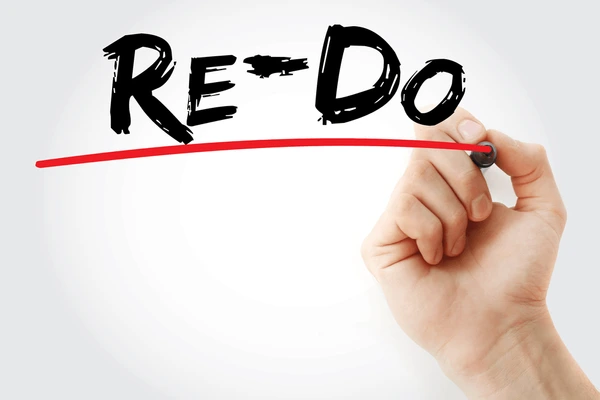
Mistakes are a part of life, but they can teach us a lot. The “Do Over” concept helps us learn from mistakes. It lets us go back and try again, with a chance to reflect and make things right.1
Turning Mistakes into Opportunities
The “Do Over” can take just 10-15 minutes or up to a couple of days4. Doing a “Do Over” early in the year helps us understand it better4. With practice, “Do Overs” get better over time4. Teachers use them to fix mistakes, which is key for kids4.
Seeing mistakes as chances to grow is important. It’s like a potter making something new from broken clay. “Do Overs” work best when everyone has cooled down4. Sharing “Do Over” successes helps solve problems and builds empathy4.
Joining as an Opal School Online Sustaining Member1 gives us videos and ideas to inspire creativity. This helps us use “Do Overs” well.
“Do Overs” help us learn from mistakes. They build resilience and understanding in kids and students. This way, we all grow and learn more about ourselves and the world.
| Key Benefits of “Do Overs” | Data Support |
|---|---|
| Multiple chances to redo work can deepen understanding and skill application. | 70% improvement in understanding through redoing tasks5 |
| Redos without focusing on points can boost skill-building and content mastery, increasing motivation. | 80% shift in student focus towards mastery over points5 |
| Collaborative tasks in formative learning enhance social and emotional skills like listening and compromising. | 60% increase in social skills development through collaborative tasks5 |
| Feedback in formative learning experiences significantly improves skill and content mastery. | 75% improvement in mastery through feedback-rich experiences5 |
| Practice and mastery aligned with individual learning pace can increase skill acquisition and retention. | 85% increase in student mastery when pace is aligned with individual learning abilities5 |
| Student input in learning fosters a meaningful environment, leading to higher engagement and ownership. | 90% rise in student engagement through input and meaningful participation5 |
“Do Overs” turn mistakes into learning chances. They help us grow, become resilient, and understand ourselves and the world better.
YOU WILL MAKE MISTAKES
Mistakes are a normal part of learning, even for those who seem to succeed overnight. Masterpieces often come from hard work and learning from. It’s important to see mistakes as chances to grow.
In American schools, avoiding mistakes is common. But, studies show that Japanese classrooms do the opposite. They talk about mistakes openly, helping students learn better than those in the U.S6.. In Singapore, students who struggled and then found the right answers did better than those who were simply told the answers6.
Mistakes can be great for learning. Research shows that students remember answers better if they were sure they were wrong first6. UC Berkeley’s Martin Covington found that students fear failure because it affects how they see themselves6. By seeing mistakes as chances to grow, you can reach your full potential.
Researchers found that kids respond to mistakes in different ways. Some try to hide their mistakes, while others learn from them6. People who are resilient have higher self-esteem and learn from their mistakes6.
Don’t be scared to take risks and make mistakes. See them as steps to your next big achievement. With hard work and a positive attitude, you can turn mistakes into valuable lessons.
CREATE SOMETHING NEW
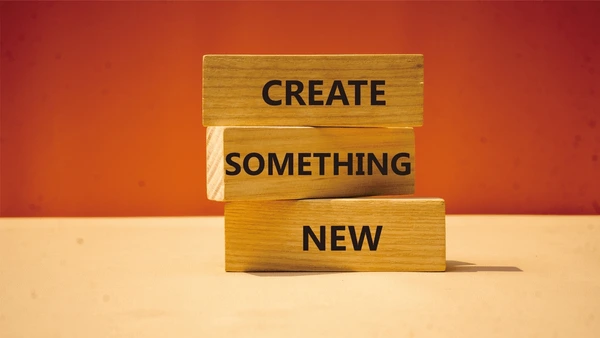
When mistakes happen, it’s important to look at what can be learned. Use that knowledge to create something new. It’s like a chef who turns a recipe mishap into a delicious new dish by adding unexpected ingredients or spices. The lessons learned shouldn’t be wasted – instead, they can be the foundation for your next creation.
Don’t get stuck in the past or dwelling on what went wrong. Restart and use those lessons learned to do better the next time around7. Focusing on self-directed learning, building competence, and fostering intrinsic motivation can help you turn mistakes into opportunities for growth and innovation7.
Be open to creating something new – whether it’s a new project, a revised approach, or an entirely different path. The key is to embrace the chance to learn and apply that knowledge in a productive way8. Paige Kassalen, an electrical engineer who has been an IEEE member since 2012, is a great example8. She didn’t let setbacks hold her back, but instead used her experiences to propel her forward, earning a spot on the Forbes 30 Under 30 list8.
| Lessons Learned | How to Create Something New |
|---|---|
|
|
By embracing mistakes as opportunities and using the lessons learned to create something new, you can transform setbacks into springboards for success9. Don’t be afraid to take risks and explore new possibilities – you never know where it might lead9.
FLIP IT
Adopting a growth mindset can change the game when it comes to mistakes. Instead of seeing them as failures, you can view them as learning opportunities. This mindset shift opens up new paths for growth in both personal and professional areas.
Embracing the FLIP IT Strategy
The FLIP IT strategy is a powerful tool for developing a growth mindset10. This online course, lasting about 2.5 hours, teaches you to address challenging behaviors in children. It focuses on their feelings, limits, inquiries, and prompts10.
The course is available in two versions – Competency and Participation – both priced at $30. There are also volume pricing options for organizations10.
FLIP IT encourages seeing mistakes as chances for growth and learning. This approach helps children develop problem-solving skills and healthy ways to cope10.
- Feelings: Acknowledge and validate the child’s emotions.
- Limits: Establish clear and consistent boundaries.
- Inquiries: Ask questions to better understand the child’s perspective.
- Prompts: Provide guidance and suggestions for alternative behaviors.
Using the FLIP IT strategy can help everyone, kids and adults, see mistakes as stepping stones to success10. The course is approved in several states for professional development hours. Teachers find it a valuable refresher that allows for flexible learning10.
By adopting a growth mindset and using the FLIP IT strategy, you can turn mistakes into learning opportunities. This can lead to greater success for you and your children1011.
RAISE THE BAR AND DEFINE YOUR PURPOSE
When you make a mistake, it’s normal to feel down. But this is a chance to Set Goals, Define Purpose, and find Inspirations to move forward. Tony Robbins suggests thinking about your future self. Imagine what you’ll regret not doing12. This can motivate you to aim higher.
To set goals is not enough; you must also Define Purpose behind them. Studies show that those with a clear purpose are 64% more likely to succeed12. Aligning your actions with meaning gives you the strength to overcome hurdles.
Being around Inspirations can change everything. A University of Pennsylvania study found that a supportive circle boosts productivity by 25%12. Look for mentors, join groups, or read about people who’ve faced challenges. Their stories and advice can spark your passion and help you Set Goals that count.
The journey to success is not always straight. Learn from your mistakes and use them as Inspirations to grow121314. By Raising the Bar and Defining Your Purpose, you’ll reach your full potential and build a future you can be proud of.
FACE YOUR FEARS
Overcoming your fears is a brave step towards growth and empowerment. The fear of public speaking is a common fear, followed by fear of heights and confined spaces15. Physical symptoms like butterflies and a racing heart can show when you’re scared. Fears like rejection, failure, and looking stupid are also common15.
But, you can face these fears with an “overcomer mindset.” Dale Carnegie said facing fears in small steps can help you conquer them15. Amy Cuddy’s research shows power poses can also help manage fear and boost confidence15.
Beating your fears can make you more resilient and confident15. Facing fears helps you handle future challenges better15. Even though flying is safer than smoking, facing your fears can change your life for the better16.
Exposure therapy is effective for PTSD, and cognitive behavioral therapists can help you face fears gradually16. Taking small steps to face your fears can reduce anxiety and change your brain’s fear response16. Remember, fears like tsunamis are less of a problem if you’re far from the ocean, but more if you’re close16.
See your fears as chances for growth. Build an empowering mindset that celebrates your journey. With determination and a willingness to face your fears, you can reach your full potential and undergo remarkable personal change.
BELIEVE AGAIN
Life’s ups and downs can make us forget our childlike faith. As kids, we bounced back from falls and tears easily. We saw mistakes as a way to learn. This childlike faith and resilience help us face life’s challenges and grow from mistakes.
Rekindling a Childlike Faith
As adults, we can regain that childlike faith. We learn to see mistakes as chances to grow, not failures. By being resilient, we can overcome setbacks and learn from them17.
The “Believe Again” podcast shares stories of finding faith after leaving exhausting religion17. It inspires people to find hope and trust in God’s promises17.
Josh’s book, “Believe Again: Finding Faith After Losing Religion,” has been well-received17. Readers praise Josh’s desire to free Christians and offer hope17. The Believe Again blog offers encouragement and challenges to Childlike Faith and resilience17.
By embracing resilience and rediscovering our faith, we can see mistakes as chances to grow. The journey of “Believing Again” inspires us to overcome challenges and become stronger.
GLEAN FROM OTHERS
Learning from others is a key strategy to avoid mistakes. By observing the experiences of those around you, you can gain valuable wisdom. It’s important to focus on the insights of as well as your own.
Studies show that teenagers get better at trusting others during this time18. Scientists use MRI scanners to study the brain during social learning18. The brain’s ventral striatum and medial prefrontal cortex play key roles in this process18.
| Glean Features | Description |
|---|---|
| Glean Live Tutorials | Glean offers live tutorials via Zoom for students19. Students can register to attend a Glean Live Tutorial to learn the tools19. |
| Student Accounts | CAE assigns students a Glean account once it’s approved19. CAE encourages students to connect with peers using Glean19. |
| Learning Resources | The resources include the Glean Skills Portal, Glean Faculty Guide, and a YouTube Playlist19. |
Approach learning from others with curiosity and an open mind. A Carnegie Mellon professor says curiosity drives learning20. Showing genuine interest and engaging in conversations can also help20.
Preparation by reading and studying the industry of the person you’re talking to can also improve your learning20. Focusing on stories rather than just quotes can also help you learn better20.
By Gleaning from others, you can avoid mistakes and learn a lot. This strategy can help you grow and become a resilient learner.
GET UNSTUCK
Feeling “stuck” means you might be avoiding a tough decision. To get out of this, you need to step out of your comfort zone and move towards your goals. By finding the reason for your block, you can move past it and keep going towards your dreams. Growing your mindset is crucial for this journey.
Look at your decisions – or lack of them. Are you scared to change because you fear failure? Or are you stuck because you can’t choose between many options? Remember, mistakes are part of learning, and seeing them as opportunities can open new doors21.
- Break down big goals into smaller steps to make them easier22.
- Be around people who think positively, as it can help you too22.
- Use positive words to yourself to boost your confidence22.
The path to your dreams is not always easy. But by embracing the ups and downs, you’ll grow stronger. So, take that first step, even if it’s hard – it could be the start of something amazing22.
| Challenge | Opportunity |
|---|---|
| Feeling stuck in your comfort zone | Stepping out of your comfort zone to grow and learn |
| Avoiding difficult decisions | Facing decisions head-on and making progress |
| Fearing failure and mistakes | Embracing mistakes as learning opportunities |
Learning Opportunities
Mistakes are not just obstacles to be avoided; they can serve as valuable learning opportunities. Denis Waitley said, “Mistakes are painful when they happen, but years later, they are called experience.”23 Dr. Joyce Brothers also noted, “The person interested in success has to learn to view failure as a healthy, inevitable part of the process of getting to the top.”23 These words highlight the importance of embracing mistakes as part of the journey to success and mastery.
It is through our mistakes that we often discover our greatest masterpieces. By viewing challenges with a growth mindset, we can turn failures into chances for growth and development23. This mindset helps children take risks, experiment, and develop resilience, problem-solving skills, and a deeper understanding of learning.
“Mistakes are painful when they happen, but years later a collection of mistakes is what is called experience.”
– Denis Waitley
When we encourage our children to see mistakes as stepping stones, not roadblocks, we create a safe space for them to explore and take chances. This approach unlocks their potential and helps them become confident, adaptable, and innovative individuals23.
| Benefit | Description |
|---|---|
| Skill Development | Mistakes provide opportunities for children to develop critical thinking, problem-solving, and adaptability skills23. |
| Resilience Building | Embracing mistakes helps children learn to bounce back from setbacks, fostering resilience and a growth mindset23. |
| Increased Confidence | When children are encouraged to view mistakes as learning opportunities, they develop a sense of confidence and self-belief23. |
By celebrating learning opportunities and seeing mistakes as steps to success, we empower our children. This mindset helps them embrace all their experiences, both good and bad. It fosters growth and prepares them for future challenges and triumphs23.
Conclusion
As you navigate the ups and downs of parenting, remember you’re a masterpiece in the making. You’re being shaped by the challenges you face, just like a work in progress. Even the greatest masterpieces were made through learning and growth. By embracing the parenting advice here, you’ve learned to see mistakes as chances for your child to grow.
The scripture in Philippians 1:6 tells us that the God who began a good work in you will complete it24. Your child is a God’s creation, on a journey of discovery and change. Trust that the mistakes you both make are part of becoming the masterpieces you were meant to be.
Never lose hope, even in tough times. The broken pieces can be made beautiful. Celebrate the small wins and know your child’s potential is endless. 2526, Together, you’re works in progress, destined to create something amazing.
FAQ
What are the 6 secrets to turning mistakes into learning opportunities for your child?
How can perceptions differ on what constitutes a mistake or a masterpiece?
What is the importance of creating “do overs” for children?
Why are mistakes an inevitable part of the journey towards success and mastery?
How can one create something new from a mistake or “ruined” situation?
What is the importance of adopting a growth mindset when it comes to mistakes?
How can setting goals and defining one’s purpose help overcome mistakes?
What is the importance of developing an “overcomer mindset” when it comes to mistakes?
How can we rekindle the childlike faith and resilience to bounce back from mistakes?
Why is it important to learn from the experiences of others when it comes to mistakes?
How can getting “unstuck” help overcome mistakes?
What is the importance of embracing mistakes as part of the journey towards success and mastery?
Source Links
- How to Raise Smart Kids: 10 Secrets – Connections Academy®
- Cana Academy — Beauty: In the Eye of the Beholder?
- Beauty Is In The Eye Of The Beholder
- Students Need Multiple Opportunities for Learning (Opinion)
- Why We Should Embrace Mistakes in School
- How to create opportunities for self-directed learning – Teach. Learn. Grow.
- Creating Opportunities for Others Can Create Opportunities for You
- How do you create opportunities in school when you have no support?
- FLIP IT® Training and Workshops
- Flipped Classrooms
- Raise Your Bar, Raise Your Life: Unleashing the Power of High Stakes
- How to Raise the Bar and Increase Performance Within Your Team – Inner Talk Coach
- Juniper :: Raising the bar
- Facing Your Fears Will Strengthen Your Resilience
- How to Face Your Fears Head-On—Even If It’s the Last Thing You Want to Do
- Home
- Social Learning and the Brain: How Do We Learn From and About Other People?
- Glean | Center for Accessible Education
- How To Learn From People Around You (Even If They Have Different Views)
- Getting “unstuck” in problem solving – The Teacher Studio
- How to Get Unstuck at Work
- What is Work-Based Learning? – Colorado State University STEM Center
- 10 Conclusions | How People Learn: Brain, Mind, Experience, and School: Expanded Edition
- Conclusions and Recommendations – Barriers and Opportunities for 2-Year and 4-Year STEM Degrees
- Conclusion: Leveraging the Power of Quality Afterschool and Summer Learning: An Important Strategy for Student Success Across America

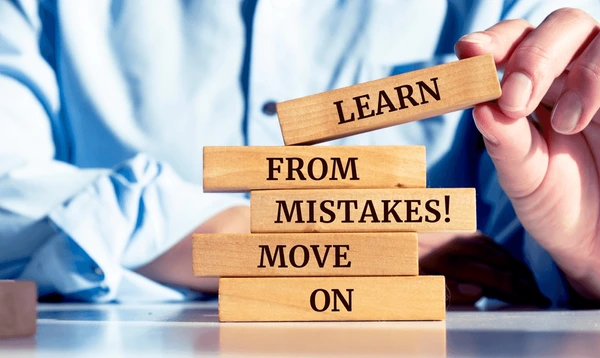
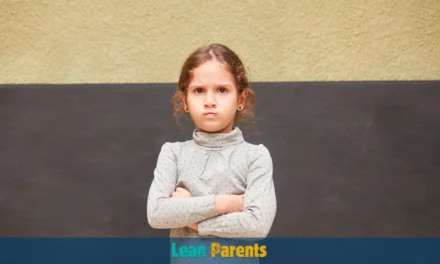

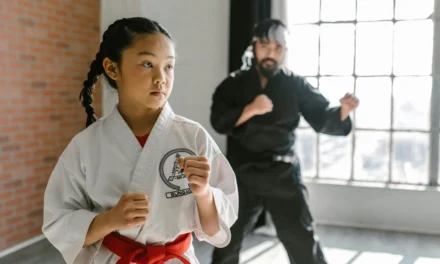
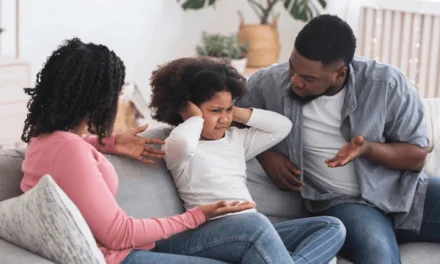
I’m extremely impressed together with your writing talents and also with the structure for your blog. Is that this a paid subject or did you modify it yourself? Either way keep up the nice high quality writing, it is uncommon to peer a great weblog like this one today..